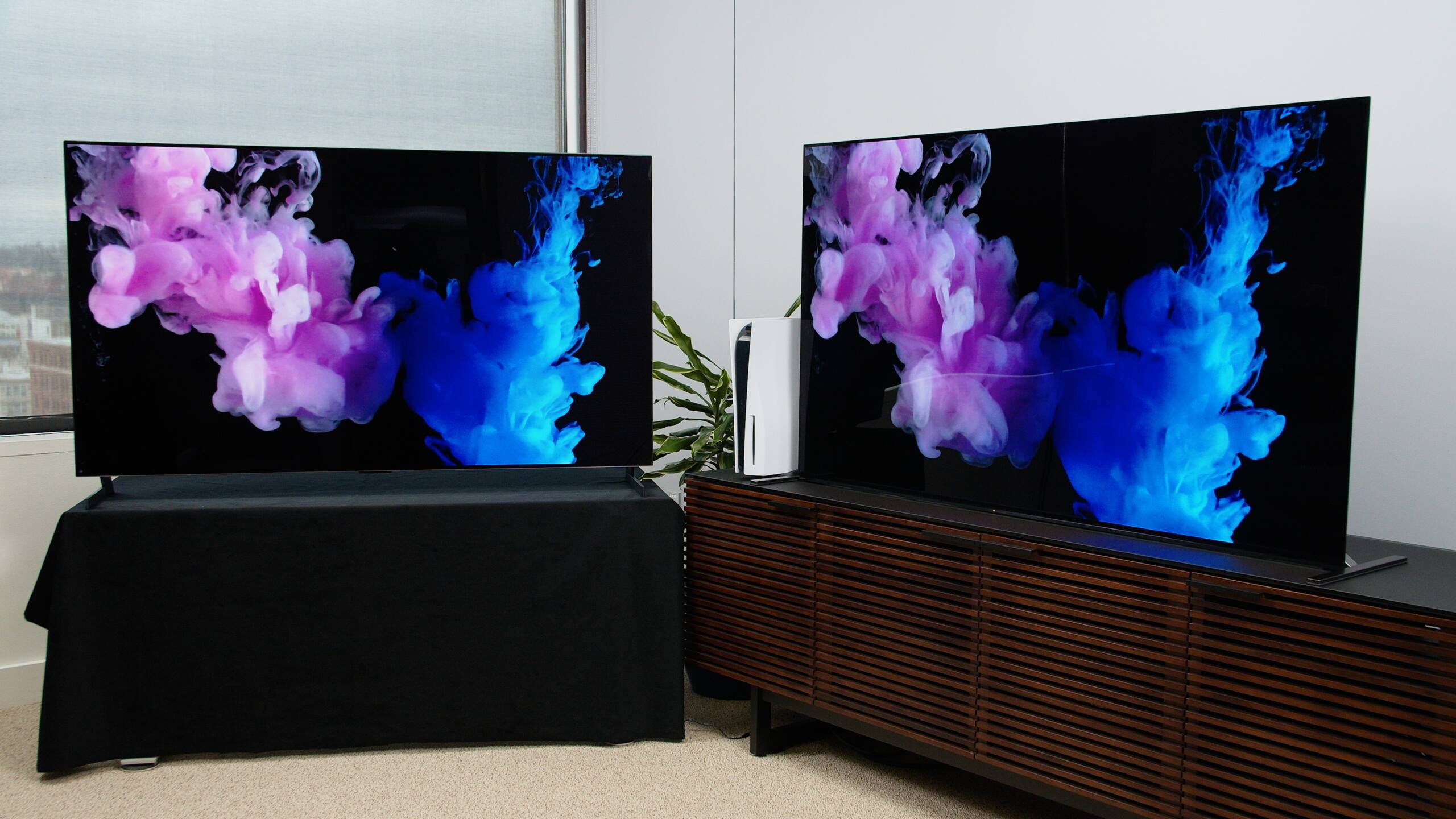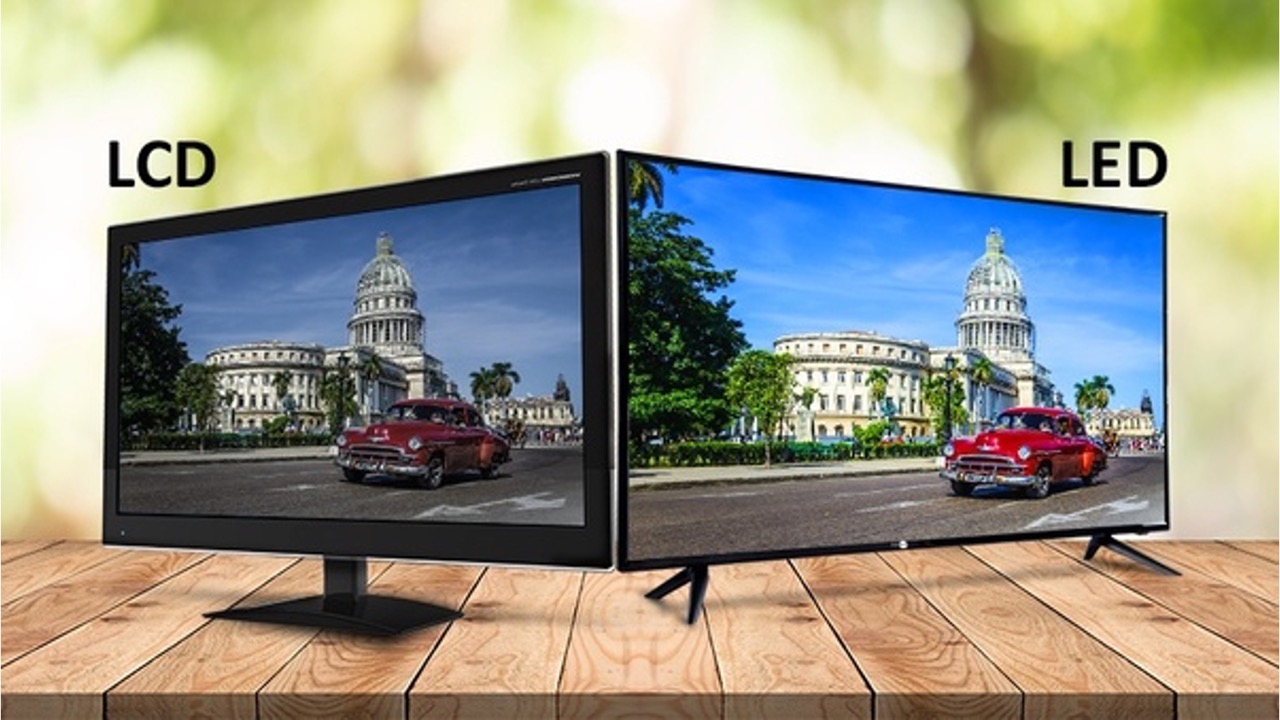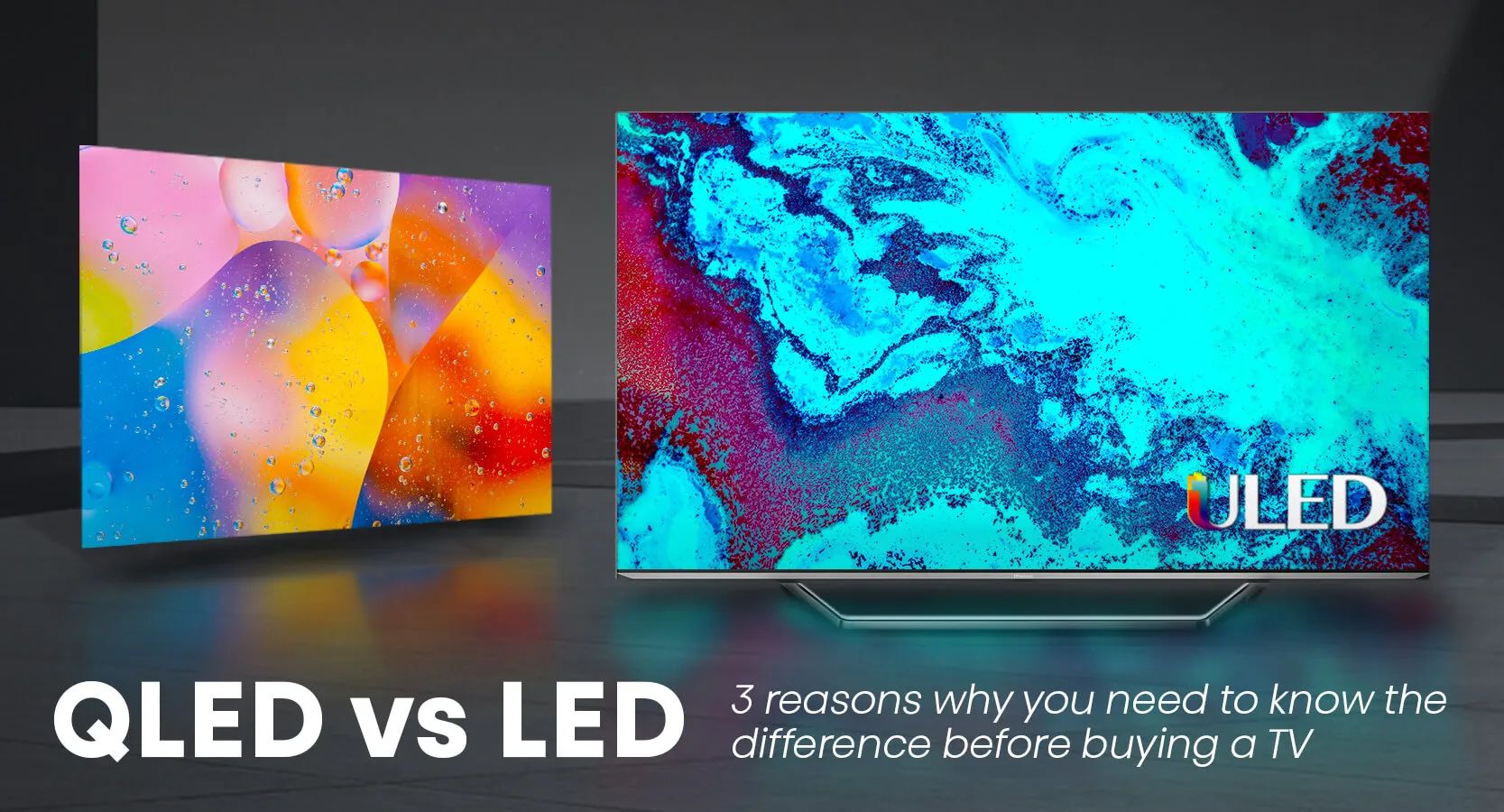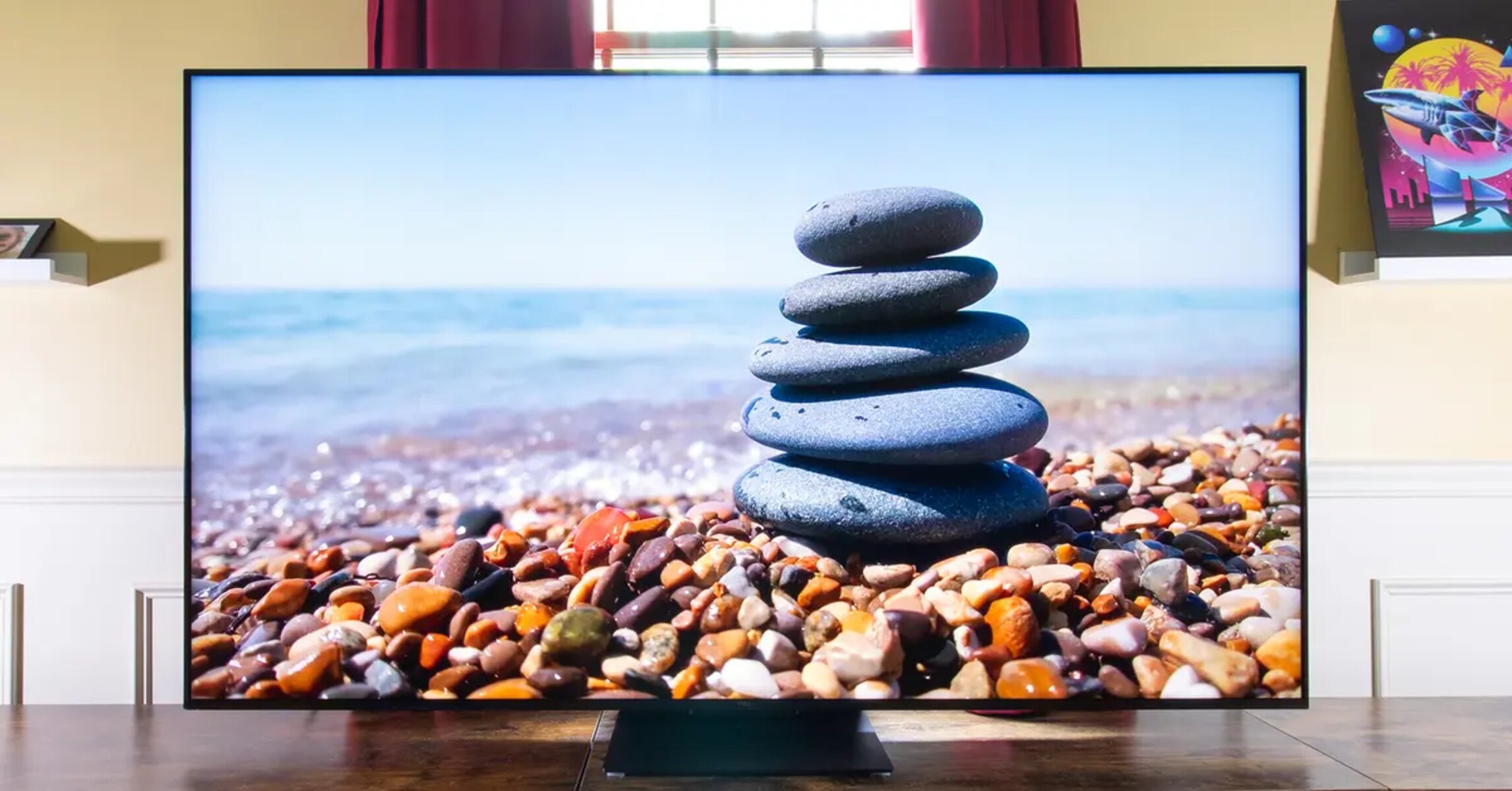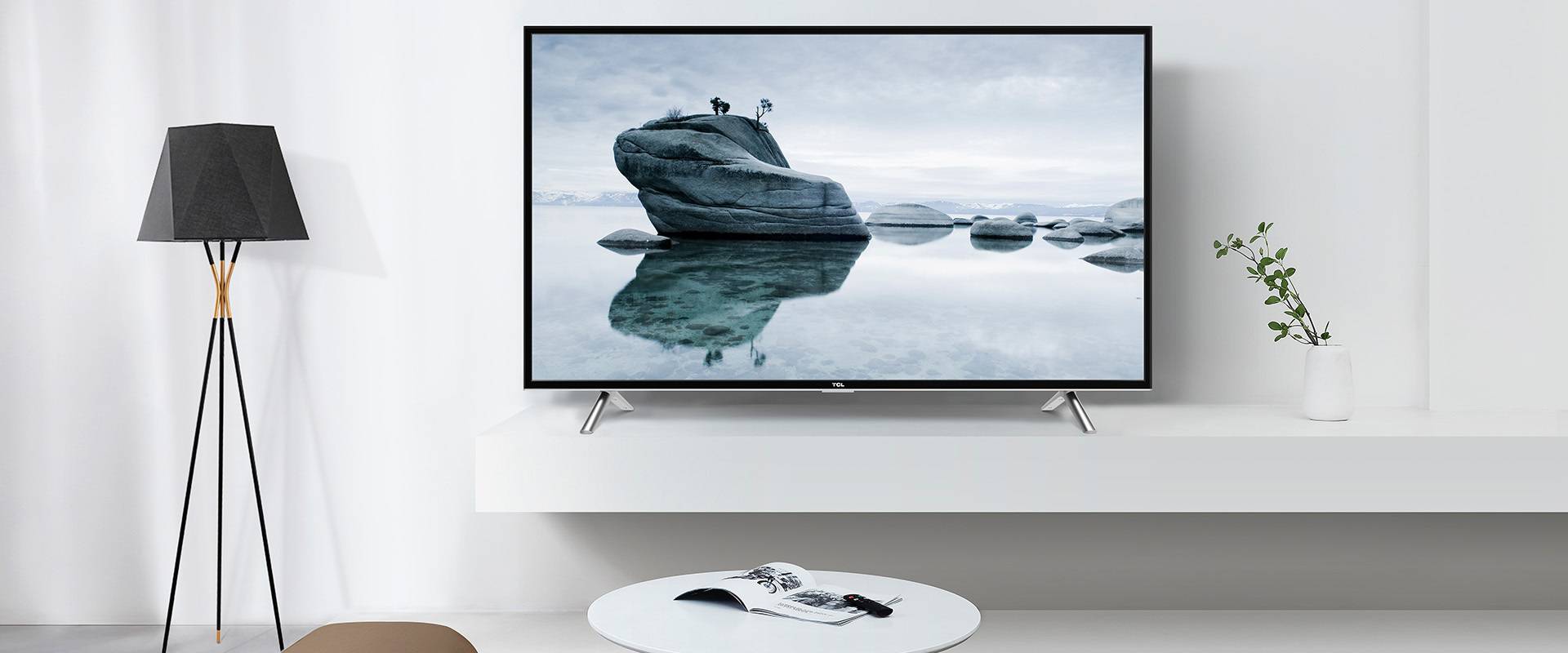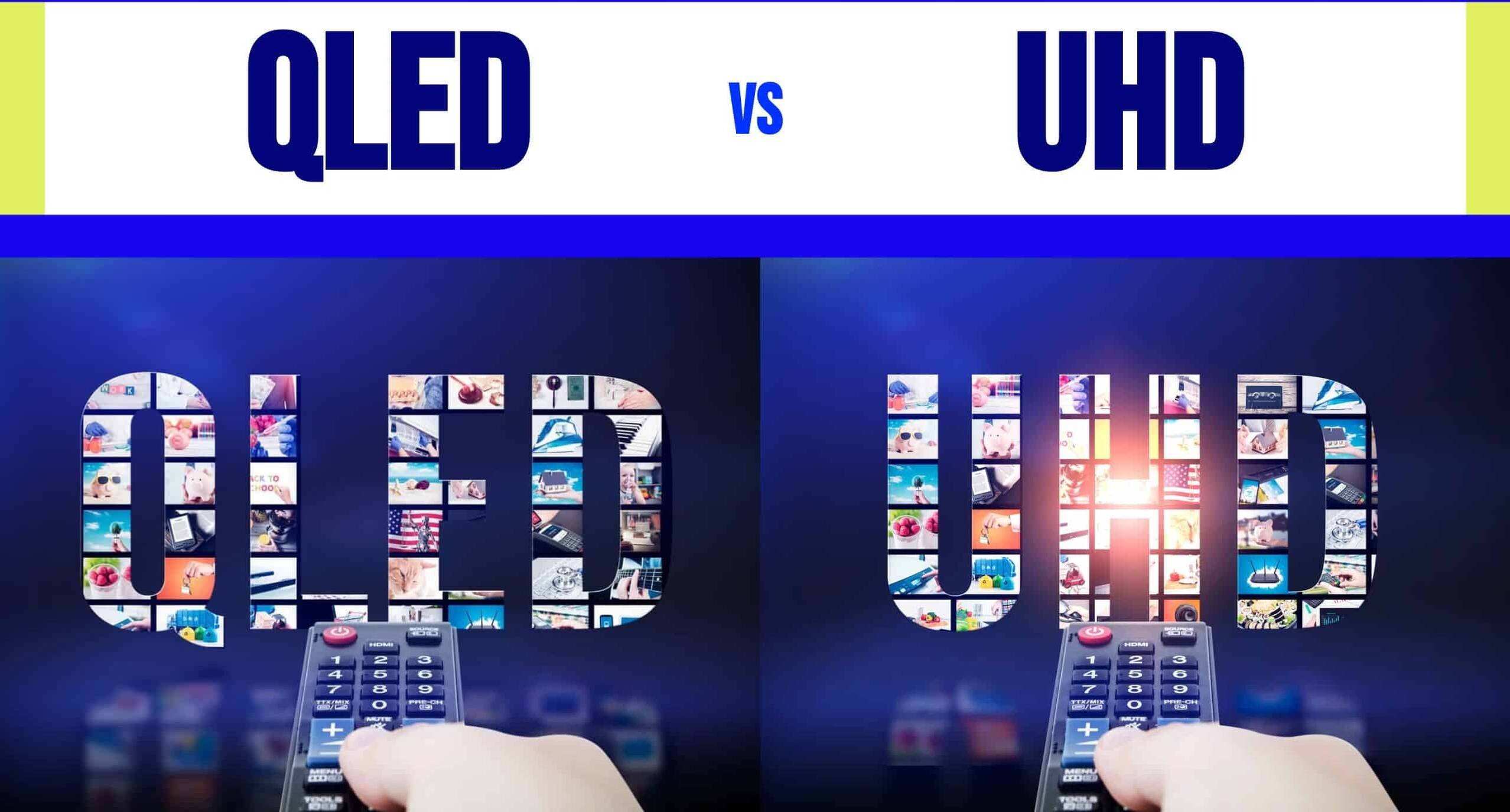Introduction
Welcome to the world of LED TVs, where the quality of image and visual experience have reached new heights. As you explore the various features and specifications of LED TVs, you might come across a term called “contrast ratio.” But what exactly is contrast ratio, and why is it important for LED TVs?
Contrast ratio refers to the difference between the brightest white and the darkest black that a television can display simultaneously. It is a crucial factor in determining the overall picture quality and visual performance of an LED TV. A higher contrast ratio means that the TV can display more distinct shades of black and white, leading to better depth, detail, and realism in the images displayed.
The contrast ratio is a fundamental element in recreating lifelike images on LED TVs. It allows for a broader range of colors, from deep blacks to bright whites, resulting in more vibrant and dynamic visuals. With a high contrast ratio, dark scenes appear rich and detailed, while bright scenes are rendered with precision and accuracy.
The science behind contrast ratio lies in the ability of LED TVs to control the backlighting of individual pixels. These pixels can be dimmed or brightened based on the content being displayed, resulting in the contrast between dark and light shades. A higher contrast ratio enables TVs to achieve greater control over backlighting, providing a more immersive and captivating viewing experience.
When shopping for an LED TV, it’s essential to consider the contrast ratio as it greatly impacts the picture quality. A higher contrast ratio will provide better image depth, clarity, and detail, making your favorite movies, TV shows, and sports events truly come to life. On the other hand, a lower contrast ratio might result in washed-out colors, less defined details, and a compromised visual experience.
Factors such as screen size, panel technology, backlighting method, and image processing capabilities can affect the contrast ratio of an LED TV. Different manufacturers may also measure and advertise contrast ratios differently, so it’s wise to compare specifications directly to make an informed decision.
In the following sections, we will delve deeper into the concept of contrast ratio, its impacts on picture quality, and factors to consider when comparing contrast ratios on different LED TVs. So, let’s embark on this journey to uncover the world of contrast ratio and unleash the true power of your LED TV!
Definition of Contrast Ratio
Contrast ratio is a term used to describe the measurement of the difference between the brightest white and the darkest black that an LED TV can display simultaneously. It is an essential specification that helps determine the level of detail and realism in the images displayed on the screen. Contrast ratio is typically represented as a ratio, such as 1000:1 or 5000:1, indicating the difference in luminance between the whitest white and the blackest black.
The contrast ratio is a key factor in evaluating the picture quality of an LED TV. It directly affects the depth, clarity, and vibrancy of the images, making it a crucial consideration for anyone seeking an immersive viewing experience. A higher contrast ratio means that the TV can display a wider range of colors and shades, resulting in more detailed and lifelike visuals.
It is important to note that contrast ratio is not only about the extremes of black and white but also about the ability of the TV to display the shades of gray in between. The more steps of gray a television can accurately produce, the better its overall contrast ratio. This level of detail in grayscale is what contributes to the depth and richness in images.
Manufacturers measure contrast ratio in different ways, which can sometimes lead to confusion when comparing LED TVs. Some manufacturers may measure the contrast ratio dynamically, where the TV adjusts the backlighting based on the content being displayed. This can result in higher contrast ratios but may not accurately reflect the TV’s performance in real-world viewing conditions. Others measure contrast ratio statically, which provides a more consistent and reliable measurement but may not account for the full potential of dynamic contrast technologies.
Ultimately, understanding the contrast ratio of an LED TV is crucial for making an informed purchasing decision. It enables you to assess the TV’s ability to reproduce deep blacks, bright whites, and a wide range of shades in between. By considering the contrast ratio alongside other picture quality factors such as resolution, color accuracy, and motion handling, you can find a TV that delivers incredible visual fidelity and an immersive entertainment experience.
Importance of Contrast Ratio on LED TVs
The contrast ratio is a vital specification to consider when choosing an LED TV, as it directly impacts the overall visual quality and immersive viewing experience. A high contrast ratio enhances the depth, vibrancy, and detail of images, allowing for a more engaging and realistic portrayal of the content being viewed.
One of the main reasons why contrast ratio is important is its ability to reproduce deep blacks. A high contrast ratio enables LED TVs to display darker areas of an image with greater detail and accuracy. This is crucial for enhancing the overall image quality and creating a sense of depth and realism. Dark scenes in movies, TV shows, and video games appear more immersive and lifelike when displayed on a TV with a high contrast ratio.
Furthermore, a high contrast ratio helps LED TVs produce brighter whites, which are essential for displaying highlights and bright areas in an image. Whether it’s the shining sun, a dazzling explosion, or the radiant smile of a character, a higher contrast ratio ensures that these bright elements appear vivid and impactful. The ability to render bright whites effectively complements the deep blacks, creating a well-balanced and visually stunning image.
Another advantage of a high contrast ratio is its impact on color reproduction. LED TVs with a higher contrast ratio can display a wider range of colors and shades, resulting in more accurate and vibrant color representation. This means that you can enjoy more lifelike and vivid visuals, with colors that pop off the screen and deliver a truly immersive viewing experience.
Moreover, a high contrast ratio improves the overall picture clarity and detail. It allows LED TVs to render finer nuances of images, revealing intricate textures, patterns, and fine lines. Whether you’re watching a nature documentary, an action-packed movie, or playing a visually stunning video game, a high contrast ratio ensures that you won’t miss any of the small details that make the visuals truly captivating.
It’s important to note that a low contrast ratio can negatively impact the picture quality on an LED TV. With a low contrast ratio, images may appear washed out, lacking depth and detail. Dark scenes may appear grayish, and bright scenes may lack the desired impact. Therefore, it’s crucial to choose an LED TV with a high contrast ratio to fully enjoy the potential of modern content and experience the visuals as intended by the filmmakers and content creators.
In summary, the contrast ratio plays a significant role in determining the visual quality and impact of an LED TV. It enhances the depth, detail, color accuracy, and overall realism of the images displayed. By choosing a TV with a high contrast ratio, you can elevate your viewing experience to new heights and immerse yourself in a world of vibrant and lifelike visuals.
The Science Behind Contrast Ratio
The contrast ratio of an LED TV is not purely a subjective or arbitrary value. It has a scientific foundation rooted in the way light and colors are perceived by our eyes and how LED TVs manipulate these elements to produce captivating visuals.
At its core, contrast ratio is determined by the ability of an LED TV to control the backlighting of individual pixels. LED TVs achieve this by using a matrix of small light-emitting diodes (LEDs) behind the screen, which can be dimmed or brightened to control the intensity of light emitted by each pixel. These pixels collectively form the images we see on the screen.
The science of contrast ratio goes beyond simply turning the pixels on or off. It involves a process known as local dimming, where the backlighting is dynamically adjusted to create darker areas of the image. This local dimming enables LED TVs to achieve deeper blacks and enhance the overall contrast ratio.
Local dimming can be achieved in different ways, depending on the specific LED TV technology. One common method is known as full-array local dimming, where the LEDs behind the screen are arranged in a grid pattern and individually controlled. This allows for precise control over the brightness in different areas of the screen, resulting in enhanced contrast and improved picture quality.
Another method is known as edge-lit local dimming, where the LEDs are placed along the edges of the screen. This design allows for a thinner TV profile, but the local dimming control is less precise compared to full-array local dimming. Nevertheless, manufacturers have developed sophisticated algorithms and image processing techniques to optimize the local dimming performance and still achieve a high contrast ratio.
The science behind the contrast ratio also involves the concept of luminance, which refers to the amount of light emitted by a specific area of the screen. The luminance of the white areas is compared to the luminance of the black areas to determine the contrast ratio. LEDs are capable of producing intense levels of brightness, allowing for a wide range of luminance values and contributing to a high contrast ratio.
It’s important to note that contrast ratio is not solely determined by the backlighting technology. Other factors, such as image processing algorithms and panel technologies, also play a role in enhancing the contrast ratio. These technologies can minimize light bleed and optimize the distribution of brightness across the screen, resulting in sharper contrasts and more accurate reproduction of colors.
In summary, the science behind contrast ratio revolves around the ability of LED TVs to control backlighting and manipulate the luminance of individual pixels. This control allows for the creation of deeper blacks, brighter whites, and a wider range of shades in between. By understanding the scientific principles underlying contrast ratio, we can appreciate the technical advancements that enable LED TVs to deliver stunning visuals and immerse us in a world of cinematic experiences.
Understanding Higher Contrast Ratio
A higher contrast ratio is often considered desirable when choosing an LED TV, as it allows for a more immersive and visually engaging experience. Understanding the benefits of a higher contrast ratio can help you appreciate its impact on the overall picture quality.
One of the primary advantages of a higher contrast ratio is its ability to produce deeper blacks. When an LED TV has a high contrast ratio, it can display dark scenes with exceptional detail and richness. The deep blacks provide a sense of depth, making the image appear more realistic and enhancing the overall visual experience.
Furthermore, a higher contrast ratio ensures that brighter elements in the image, such as highlights, are displayed with striking clarity. Whether it’s the glimmering sunlight reflecting off water or the dazzling explosions in an action movie, a high contrast ratio allows for bright elements to truly shine, adding a level of dynamism and impact to the visuals.
Another benefit of a higher contrast ratio is its impact on color reproduction. With a wider range of colors and shades, LED TVs with a higher contrast ratio can produce more accurate and vibrant colors. This means that you can enjoy images that are more true to life, with colors that are vivid, rich, and full of nuance.
To understand the impact of contrast ratio on color reproduction, consider a scene with a vibrant sunset. With a higher contrast ratio, the LED TV can accurately reproduce the subtle shades of orange, red, and pink, creating a breathtaking and immersive visual experience. In contrast, a lower contrast ratio may result in washed-out colors, diminishing the realism and impact of the scene.
Moreover, a higher contrast ratio enhances the overall detail and clarity of the image. Fine textures, intricate patterns, and subtle details become more visible and refined, enriching the visual experience. Whether it’s the individual strands of hair on a character’s head or the intricate architectural details of a historical landmark, a higher contrast ratio ensures that these elements are rendered with precision and sharpness.
It’s important to note that the human eye is naturally drawn to contrasts, making a higher contrast ratio more visually appealing. The improved differentiation between light and dark areas on the screen contributes to a more engaging and immersive viewing experience. By enhancing the visual impact and clarity, a higher contrast ratio can elevate your entertainment and bring your favorite movies, TV shows, and games to life.
In summary, a higher contrast ratio on an LED TV provides deeper blacks, brighter highlights, more accurate colors, and improved overall image clarity. It enhances the depth, vibrancy, and realism of the visuals, allowing you to fully immerse yourself in the content you’re watching. By understanding the benefits of a higher contrast ratio, you can make an informed decision when choosing an LED TV that delivers exceptional picture quality and an unparalleled viewing experience.
Impacts of Contrast Ratio on Picture Quality
The contrast ratio of an LED TV has a profound impact on the overall picture quality, significantly influencing the depth, detail, and visual appeal of the images displayed. Understanding the interplay between contrast ratio and picture quality can help you appreciate the importance of this specification when selecting an LED TV.
One of the key impacts of contrast ratio on picture quality is its ability to reproduce deep blacks. A higher contrast ratio allows for better control over the backlighting, resulting in darker and more defined black levels. This enhances the overall depth and richness of the image, providing a more immersive and cinematic experience. Details in dark scenes become more visible, and the image gains a sense of dimension and realism.
In addition to deep blacks, a higher contrast ratio also facilitates the reproduction of brighter highlights. With a wider range between the darkest blacks and the brightest whites, LED TVs with high contrast ratios can accurately render the full spectrum of light in the image. This ensures that highlights, such as sunlight or glare, appear bright and dazzling, adding a level of brilliance and impact to the visuals.
Furthermore, contrast ratio is closely tied to color reproduction. A higher contrast ratio allows for more accurate and vibrant colors, rendering images with greater realism and visual impact. It enables LED TVs to display a wider range of shades and color gradients, resulting in more nuanced and lifelike images. From the vibrant hues of a sunset to the subtle tones in a portrait, a higher contrast ratio ensures that colors are reproduced with accuracy and depth.
Moreover, a higher contrast ratio enhances the overall image clarity and detail. It enables LED TVs to render fine textures, intricate patterns, and subtle details with precision. Whether it’s the individual blades of grass in a landscape or the intricate design on a piece of clothing, a high contrast ratio ensures that these details are properly displayed, bringing the image to life and immersing the viewer in the scene.
On the other hand, a low contrast ratio can have negative effects on picture quality. Shadows may appear grayish, colors may lack vibrancy and accuracy, and details may appear washed out or indistinct. This can result in a less engaging and immersive viewing experience, as the image lacks the depth, realism, and visual impact offered by a higher contrast ratio.
In summary, the contrast ratio significantly influences the picture quality of an LED TV. It affects the depth of blacks, the brightness of highlights, the accuracy of colors, and the overall clarity and detail of the image. By understanding the impacts of contrast ratio on picture quality, you can choose an LED TV that delivers stunning visuals and a cinematic viewing experience.
Factors that Affect Contrast Ratio
When considering the contrast ratio of an LED TV, it’s important to note that several factors can influence this specification. Understanding these factors can help you evaluate and compare contrast ratios effectively, enabling you to choose an LED TV that meets your desired picture quality standards.
One of the main factors that affect contrast ratio is the screen size. Larger screens generally have more difficulty maintaining high contrast ratios due to the increased likelihood of light bleeding between pixels. As a result, smaller screens often have higher contrast ratios compared to larger screens. However, advancements in LED TV technology have significantly improved the contrast performance even on larger screens, narrowing the gap between different sizes.
The type of panel technology used in an LED TV also plays a role in contrast ratio. There are various panel technologies available, including Twisted Nematic (TN), In-Plane Switching (IPS), and Vertical Alignment (VA). VA panels typically offer higher contrast ratios due to their ability to produce deeper blacks. However, IPS panels are known for their wider viewing angles, which can also impact the perceived contrast ratio when viewing the TV from different positions.
Another factor that can affect contrast ratio is the backlighting method used in the LED TV. There are various backlighting technologies, including edge-lit, direct-lit, and full-array local dimming. Edge-lit LED TVs have LEDs placed around the edges of the screen, which can result in lower contrast ratios compared to direct-lit or full-array local dimming methods. However, technological advancements in edge-lit LED TVs with local dimming zones can help improve their contrast ratios.
Additionally, the specific image processing capabilities of an LED TV can impact the contrast ratio. Advanced image processing algorithms can optimize the dynamic range, black levels, and overall contrast performance. These algorithms aim to enhance contrast by adjusting backlighting, optimizing brightness levels, and improving black level reproduction.
It’s worth noting that contrast ratio measurements may vary between manufacturers due to differing testing methodologies. Some manufacturers might measure contrast ratios dynamically, where the TV’s backlight adjusts dynamically as per the content being displayed. Other manufacturers may measure contrast ratios statically, which provides a more consistent measurement but may not account for dynamic contrast technologies. It’s important to compare contrast ratios from different manufacturers directly to get a clearer understanding of their performance.
Lastly, the viewing environment can also affect the perceived contrast ratio. Factors such as ambient lighting, room brightness, and reflections can impact how the image appears on the TV screen. Optimal viewing conditions, such as a darkened room, can enhance the perceived contrast ratio and improve the overall picture quality.
In summary, several factors influence the contrast ratio of an LED TV, including screen size, panel technology, backlighting method, image processing capabilities, and the viewing environment. By considering these factors, you can make a more informed decision when choosing an LED TV that delivers the desired picture quality and contrast performance.
Comparing Contrast Ratios on Different TVs
When shopping for an LED TV, one of the specifications you’ll come across is the contrast ratio. However, comparing contrast ratios between different TVs can be a bit complex due to variations in measurement methods and technologies. Understanding how to compare contrast ratios effectively can help you make a more informed decision and find an LED TV that meets your picture quality expectations.
First and foremost, it’s essential to ensure that you’re comparing contrast ratios provided by manufacturers within the same measurement method. Some manufacturers measure contrast ratios dynamically, while others measure them statically. Dynamic contrast ratios can appear significantly higher than static contrast ratios when marketed. However, dynamic contrast ratios may not reflect the true performance of the TV in real-world viewing conditions. Comparing static contrast ratios can provide a more accurate representation of the TV’s capabilities.
Another aspect to consider is the type of panel technology used in the LED TV. Different panel technologies, such as VA or IPS, can have varying contrast ratios. VA panels typically offer higher contrast ratios due to their ability to produce deeper blacks. However, IPS panels may provide better viewing angles and color accuracy. Depending on your viewing preferences and priorities, you may prioritize higher contrast ratios or wider viewing angles.
It’s also important to account for the specific backlighting method employed by each TV. Different backlighting technologies, such as edge-lit or direct-lit, can have an impact on contrast ratios. Full-array local dimming technology tends to offer better contrast ratios as it allows for precise control over individual dimming zones. Edge-lit LED TVs without local dimming may have lower contrast ratios due to potential light bleeding between the LEDs.
However, it’s worth noting that the contrast ratio is not the sole determinant of picture quality. Other factors, such as color accuracy, resolution, brightness, and image processing capabilities, also contribute to the overall visual performance of the TV. It’s important to consider these factors as well when comparing contrast ratios between different TVs.
Furthermore, keep in mind that the viewing environment can also impact the perceived contrast ratio. The amount of ambient light, the room brightness, and the presence of reflections can all influence how the contrast ratio is perceived. Viewing the TVs under controlled lighting conditions or in a dimly lit room can help you more accurately evaluate their contrast ratios.
In summary, comparing contrast ratios between different TVs requires careful consideration of the measurement method, panel technology, backlighting method, and the overall picture quality performance. By taking into account these factors and prioritizing your viewing preferences, you can make a more informed decision and find an LED TV that delivers excellent contrast performance and an immersive viewing experience.
Finding the Right Contrast Ratio for Your Needs
Choosing the right contrast ratio for your needs involves considering various factors, including your viewing preferences, the content you’ll be watching, and your budget. While a higher contrast ratio is generally desirable, finding the right balance that suits your specific requirements is key.
First, consider your viewing preferences. If you primarily watch movies or play video games with dark, atmospheric scenes, a higher contrast ratio will enhance the depth and detail of those scenes. Deep blacks and bright highlights will contribute to a more immersive and realistic experience. On the other hand, if you watch a lot of brightly lit content, such as sports or documentaries, a good contrast ratio will ensure vivid colors and crisp images without compromising on brightness and detail.
The type of content you’ll be watching is another important consideration. If you predominantly watch HDR (High Dynamic Range) content, which offers a wider range of colors and brightness levels, you may want to prioritize a TV with a high contrast ratio. HDR content is designed to take advantage of the full potential of a display’s contrast capabilities, delivering stunning visuals with remarkable depth and realism.
Consider your budget as well. TVs with higher contrast ratios and advanced display technologies tend to be more expensive. However, advancements in technology have made reasonably priced TVs with good contrast ratios widely available. Evaluate your budget and determine how much you are willing to invest in a TV with the desired contrast performance.
It’s also worth noting that personal preference plays a significant role in determining the right contrast ratio for you. Some individuals prefer a more subdued, natural viewing experience and may opt for a TV with a more moderate contrast ratio. Others may enjoy the pop and punch that comes with a higher contrast ratio. Take some time to assess your visual preferences and consider how different contrast ratios align with your viewing style.
Lastly, don’t forget to take into account the viewing environment where the TV will be placed. Consider factors such as ambient light, room brightness, and seating position. If you have a dimly lit or controlled lighting environment, a higher contrast ratio may be more suitable. However, if your viewing area is brightly lit or prone to reflections, you may need to balance contrast ratio with other factors, such as screen brightness and anti-glare technology.
In summary, finding the right contrast ratio for your needs involves considering factors such as your viewing preferences, the type of content you watch, your budget, personal preference, and the viewing environment. By taking these factors into account, you can choose an LED TV with a contrast ratio that enhances your viewing experience and delivers the level of depth, detail, and immersion you desire.
Conclusion
Understanding the concept of contrast ratio and its importance on LED TVs is crucial for making an informed decision when purchasing a new television. The contrast ratio directly affects the overall picture quality, depth, and realism of the images displayed on the screen.
A higher contrast ratio offers several benefits, including deeper blacks, brighter highlights, more accurate colors, and enhanced image clarity and detail. It allows for a more immersive and captivating viewing experience, bringing your favorite movies, TV shows, and games to life.
When comparing contrast ratios between different TVs, it’s important to consider factors such as measurement methods, panel technology, backlighting methods, and image processing capabilities. By understanding these factors and matching them with your specific viewing preferences, you can find the right balance of contrast ratio that suits your needs.
Remember to consider other factors alongside contrast ratio, such as resolution, color accuracy, motion handling, and viewing environment. These factors collectively contribute to the overall visual performance of the TV and result in an optimal viewing experience.
Whether you prioritize deep blacks in dark scenes, vibrant colors in bright scenes, or overall image clarity and detail, finding the right contrast ratio for your needs is essential. By carefully evaluating your viewing preferences, the content you watch, your budget, and the viewing environment, you can select an LED TV that delivers outstanding picture quality and enhances your home entertainment experience.
Now armed with knowledge about contrast ratio, go forth and explore the multitude of LED TVs available, making a choice that will bring joy, immersion, and stunning visuals to your living room or entertainment space.










